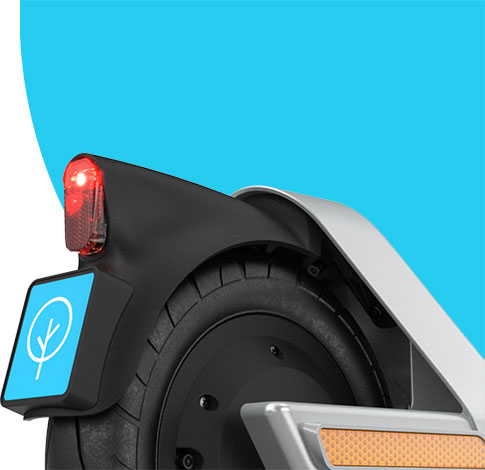Since then, much has been written about the burgeoning e-scooter space by the media, researchers and academics alike. One aspect of the evolution of this new micromobility option that is seldom highlighted is the degree to which Bird’s priorities and goals–to make cities more livable by reducing car usage, traffic, and carbon emissions–complement the priorities and goals of cities themselves. Today, we are on a shared path with cities as they grapple with growing congestion in their neighborhoods, increased car-related injuries, and air that is becoming increasingly hazardous to breathe.
Together, Bird and cities are working to achieve these key objectives. The initial benefits of these collaborations include:
Replacing short car trips: In the U.S., nearly half of all vehicle trips are less than three miles, a proportion that is much higher in cities. Micromobility is helping replace these trips with a more sustainable option. As an example, Denver’s February interim dockless report found that more than 32% of riders surveyed reported taking an e-scooter for trips they would have otherwise made by car.
Connecting to public transit: By serving the “last-mile” to public transit, micromobility can enable more people to start or finish longer trips without a car. They also increase the reach of the transit network by putting more stops and stations within easier reach. In New York City, for example, shared e-scooters could put the City’s subway system within reach of an additional 1.5 million residents.
Broadening active transportation: E-scooter riders aren’t just people switching from bikes. By enhancing the modal options available, micromobility can bring a wider community of active travelers into the fold. In Portland, 45% of e-scooter riders reported ‘never’ biking, and 78% had never used the city’s docked bikeshare program before using an e-scooter.
Getting smarter with space: Sacramento and Minneapolis are among the most recent cities to pass laws encouraging residential density and transit-oriented development. Micromobility can help residents in these densifying cities to move without adding more cars to the roads while taking up a fraction of the space. For example, more than 10 Bird e-scooters can fit in a single car parking spot, and can each be used by several travelers per day.

Improving equity: With affordable fares and no need for an annual subscription, e-scooters are within reach of more lower-income riders than ridesharing, taxis, or even docked bikeshare. This means its many benefits can be distributed more equitably across a community. And with our One Bird program, riders enrolled in government assistance programs ride at discounted rates. Data from Washington, D.C. suggests that dockless micromobility, such as e-scooters, outperformed traditional bikeshare across equity measures.
Over the last year and a half, the partnership between Bird and cities has yielded promising results and we have made tangible strides toward our shared goals. While there is much more work to be done in 2019 and beyond, we look forward to accelerating progress toward more sustainable, human-scaled transportation systems, one city at a time.

